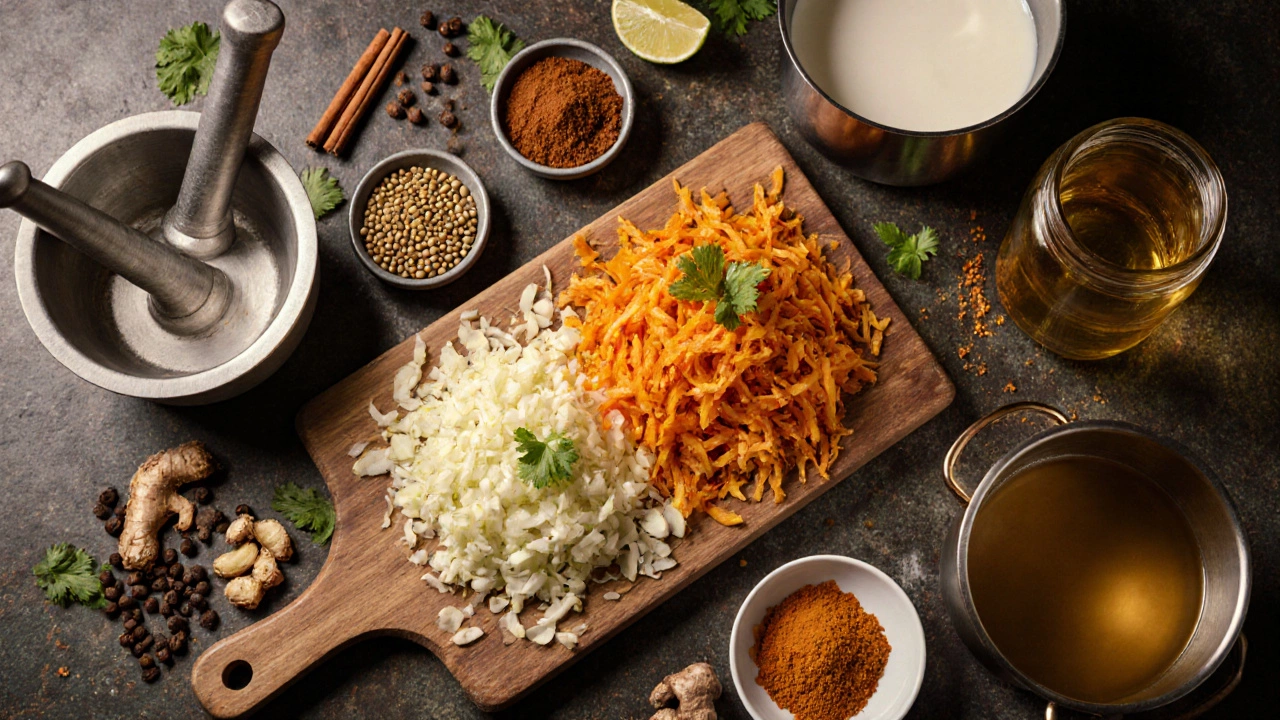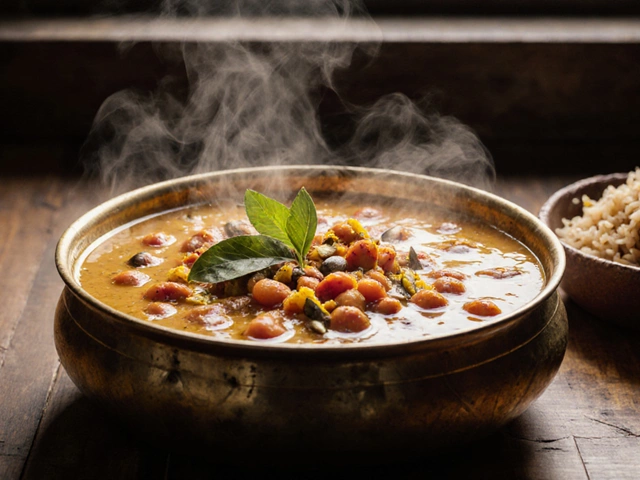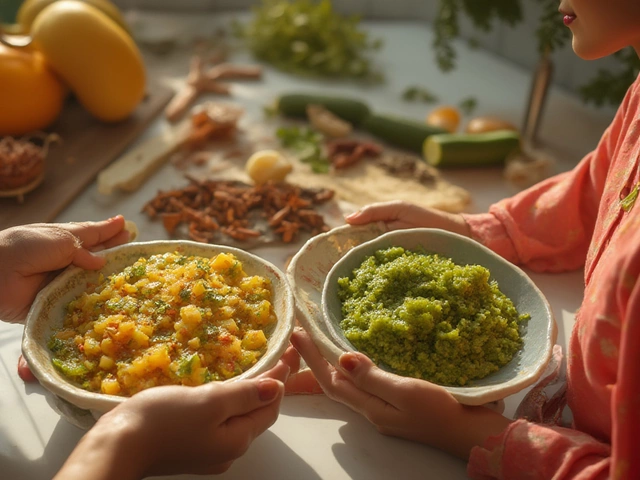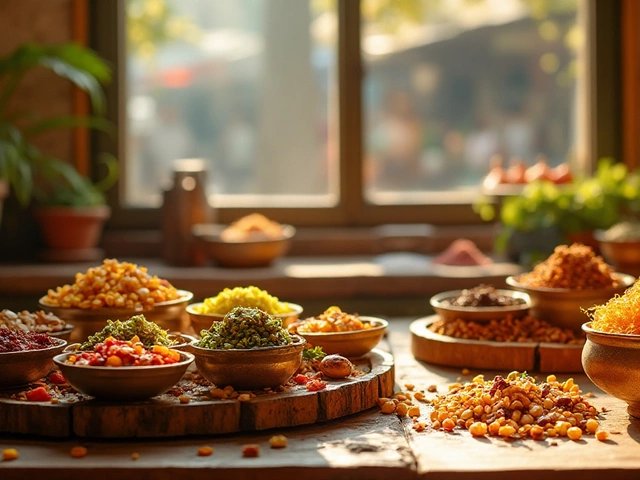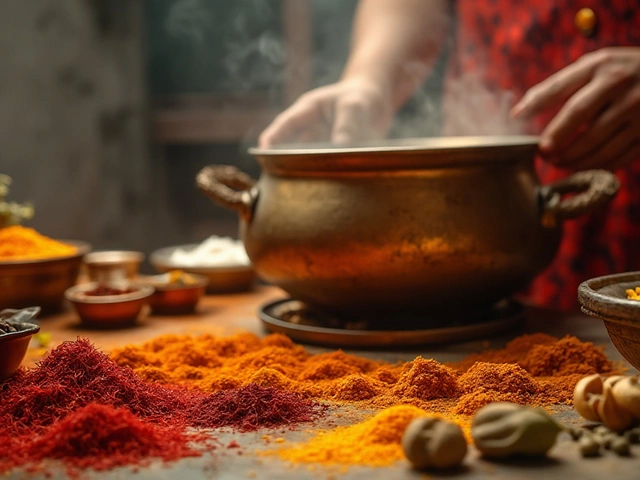Curry Flavor Balance Calculator
Flavor Balance Result
Ever wondered why some curries sing on the tongue while others fall flat? The secret isn’t magic - it’s a blend of the right ingredients, timing, and technique. Below you’ll uncover the building blocks that turn a simple pot of simmering broth into a delicious curry that keeps people coming back for seconds.
Key Takeaways
- Identify the five core flavor pillars: aromatics, spices, heat, acidity, and richness.
- Learn to toast and grind your own spice blend for maximum aroma.
- Master the sequence of adding aromatics to layer depth.
- Pick the appropriate base (stock, coconut milk, yogurt) for texture and taste.
- Avoid common pitfalls like burnt spices or watery sauces.
Flavor Foundations: The Five Pillars of Curry
At its heart, a curry is a balanced orchestra of five elements. Think of each pillar as a musical section that must harmonize.
First, curry is a dish that combines spices, herbs, and a liquid base to create a richly flavored sauce, often served with rice or bread. Without a solid foundation, the rest falls apart.
Second, aromatics are ingredients like onion, garlic, and ginger that release volatile oils when sautéed, forming the scent backbone of the dish. They provide the first wave of flavor.
Third, spices are dried seeds, bark, or roots such as turmeric, cumin, and coriander that add earthiness, color, and complexity. They are the soul of the curry.
Fourth, heat-usually from chili peppers or powdered cayenne-adds the kick that wakes the palate. Finally, a touch of acidity (lime, tamarind, or tomatoes) brightens the profile, while richness (cream, coconut milk, or yogurt) smooths the edges.
Crafting Your Own Spice Blend
Store‑bought blends are convenient, but they lose potency after a few months. Toasting whole spices and grinding them fresh releases essential oils that you can’t get from pre‑ground powders.
A classic garam masala is a warm, aromatic blend typically containing cinnamon, cardamom, cloves, cumin, and coriander. Adjust the ratios to suit your palate-more cinnamon for sweetness, extra cloves for depth.
Here’s a quick recipe for a universal base blend (about 2tbsp):
- 1tsp cumin seeds
- 1tsp coriander seeds
- ½tsp turmeric powder (see next section for why it matters)
- ¼tsp fenugreek seeds
- ¼tsp black peppercorns
- Pinch of ground cinnamon
Toast the whole seeds in a dry pan until fragrant, then grind with a mortar and pestle or spice grinder. Add the dry powders at the end.
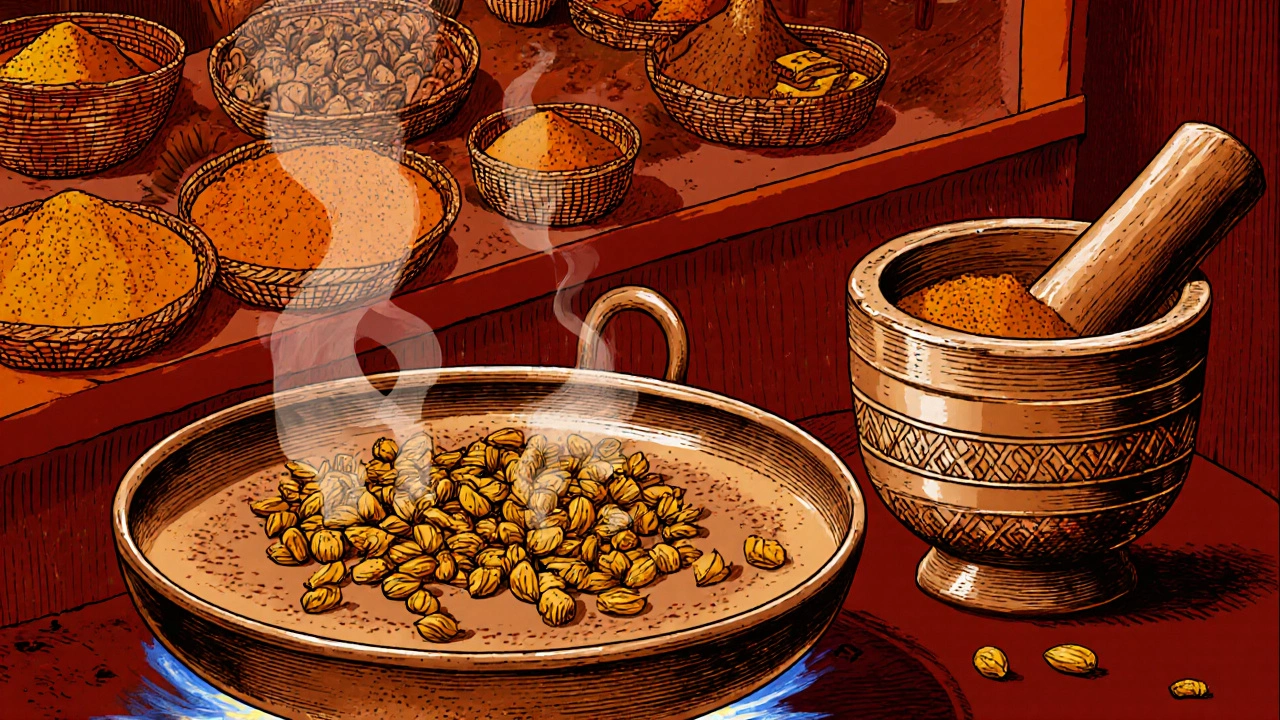
Layering Aromatics for Depth
Skipping the step‑by‑step buildup is a common mistake. Start with finely chopped onion is a bulb that, when cooked, adds sweetness and body to sauces. Cook on medium heat until translucent-about 5minutes.
Next, add minced garlic is a pungent bulb that contributes savory depth and aroma when sautéed and grated ginger is a rhizome with a bright, slightly spicy flavor, essential for balancing richness. Stir for another minute-garlic burns quickly, so keep the heat moderate.
Finally, introduce the ground spice blend. The oil from the aromatics pulls the fat‑soluble compounds out of the spices, intensifying the flavor. Cook for 2minutes, stirring constantly to prevent scorching.
Selecting the Perfect Base Liquid
The base decides texture and nuance. Here’s a quick look at three popular options:
| Base | Flavor Impact | Best Pairings |
|---|---|---|
| Chicken or vegetable stock | Subtle, savory depth | Traditional Indian curries, meat dishes |
| coconut milk is a creamy liquid extracted from grated coconut flesh, lending sweetness and richness | Sweet, tropical richness | South Indian, Thai‑inspired, vegetarian |
| Plain yogurt or kefir | Tangy, cooling | North Indian, grilled meats, lentil pots |
When using dairy‑based liquids, lower the heat after adding to avoid curdling. For coconut milk, a gentle simmer preserves its silky texture.
Cooking Techniques That Unlock Umami
Umami is the savory backbone that makes a curry feel complete. Two techniques help coax it out:
- Deglazing: After sautéing aromatics and spices, pour a splash of stock or water and scrape the browned bits (fond) from the pan. Those bits are packed with flavor.
- Slow simmer: Let the curry bubble gently for at least 20minutes. This allows the starches from onions and tomatoes to dissolve, thickening the sauce naturally.
During the simmer, stir occasionally. A well‑stirred curry prevents the spices from settling at the bottom and scorching, which would add bitterness.
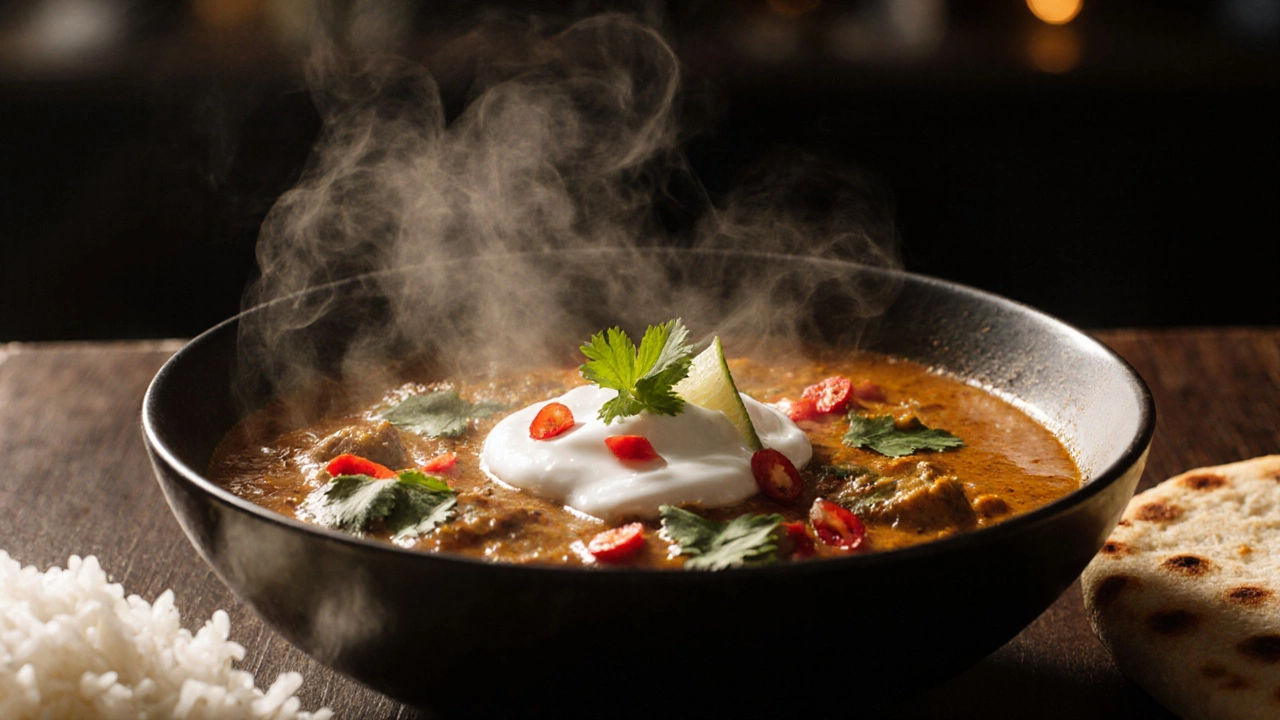
Balancing Heat, Sweetness, and Acidity
Even a perfectly spiced curry can feel off if the heat, sweet, or acid levels dominate. Taste early and adjust.
For heat, use fresh chilies, dried red chili flakes, or powdered cayenne. Add a pinch at a time-heat builds quickly.
To introduce sweetness, consider a spoonful of jaggery, a drizzle of honey, or even a handful of grated carrots. Sweetness rounds out the heat and deepens the sauce.
Acidity can be a splash of lime juice, a teaspoon of tamarind paste, or a few diced tomatoes added halfway through cooking. Acidity lifts the whole dish, preventing it from feeling heavy.
Common Mistakes and How to Fix Them
Even seasoned cooks slip up. Here are the most frequent errors and quick fixes:
- Burnt spices: If you smell a bitter, acrid odor, remove the pan from heat, add a splash of water, and stir. The steam will lift the burnt bits, and you can restart with fresh spices.
- Watery sauce: Let the curry reduce uncovered over low heat. Adding a mashed potato or a spoonful of ground nuts (almonds or cashews) also thickens the sauce.
- One‑dimensional flavor: Finish with a garnish-fresh cilantro, a dollop of yogurt, or a drizzle of ghee. The contrast adds texture and fragrance.
Quick Checklist Before Serving
- Does the sauce coat the back of a spoon?
- Is the heat level where you want it?
- Have you added a splash of acid?
- Is the garnish fresh and complementary?
- Is the curry at a gentle simmer, not a rolling boil?
If you answer yes to all, you’ve nailed the fundamentals of a delicious curry. Serve with basmati rice, naan, or your favorite flatbread, and enjoy the payoff of balanced flavors.
Frequently Asked Questions
Can I make curry without any fresh aromatics?
You can, but the depth will suffer. Dried powders lack the volatile oils that fresh onion, garlic, and ginger release. If you’re short on fresh produce, use a small amount of ginger‑garlic paste and an extra pinch of ground cumin to compensate.
How long should I toast my whole spices?
Usually 2-4 minutes over medium heat, shaking the pan constantly. When they turn golden and you can smell their fragrance, they’re ready. Over‑toasting makes them bitter.
Is it okay to add coconut milk early in the cooking process?
Yes, but add it after the spices have cooked down. Early addition can mask the toasting aroma. Stir it in, then let the curry simmer gently to blend the flavors.
What’s the difference between garam masala and curry powder?
Garam masala is an Indian blend used toward the end of cooking for a warm finish, while curry powder is a British‑style blend that often contains turmeric and is added earlier. Garam masala focuses on aromatic spices; curry powder adds color and mild heat.
How can I adjust a curry for a vegetarian diet?
Swap meat broth for vegetable stock, increase the amount of legumes or paneer, and consider adding extra vegetables like cauliflower or sweet potatoes. A splash of soy sauce can add umami without animal products.
My curry is too salty - what can I do?
Add a bit of unsweetened coconut milk or yogurt to mellow the salt. Alternatively, stir in a spoonful of sugar or a diced potato; let it sit for 10 minutes, then remove the potato before serving.
- Poplular Tags
- delicious curry
- curry spices
- curry base
- flavor balance
- curry cooking tips





